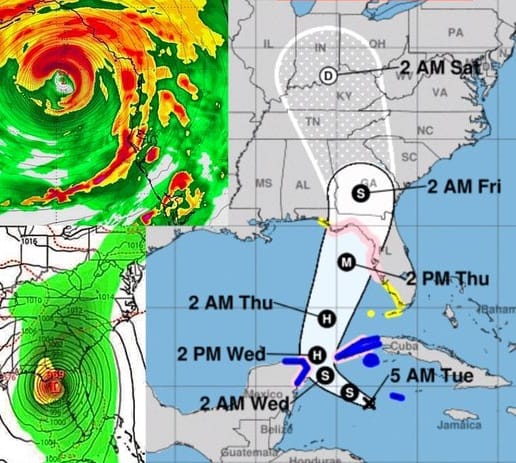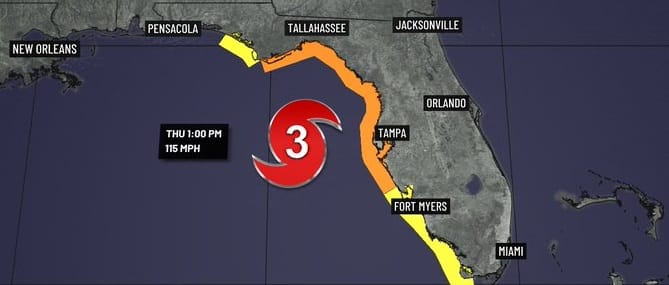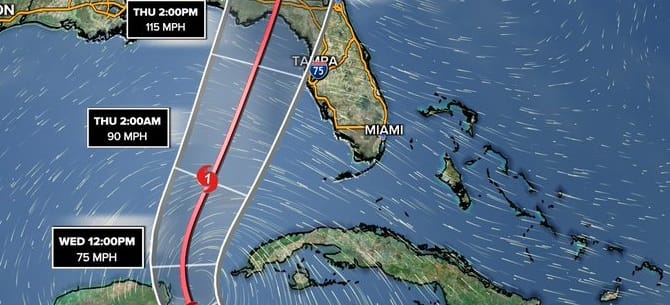
While meteorologists are tracking the storm in the Atlantic, Florida finds itself on high alert for what could become a significant hurricane. With warnings of damaging winds and dangerous storm surge, residents and officials are preparing for the worst. This article explores the storm’s projected path, potential impacts on communities, and safety measures Florida residents need to take to prepare for this severe weather event.
Understanding the Hurricane
Current forecasts indicate that the hurricane intensifying in the Atlantic could make landfall on the Florida coast in the next few days. Meteorologists predict the storm will bring sustained winds of over 100 mph and storm surges that could inundate coastal areas, causing severe flooding. The National Hurricane Center (NHC) has issued alerts, urging residents in affected areas to remain vigilant and prepared.
Hurricanes are classified on a scale of 1 to 5, with Category 3 or above classified as major hurricanes. As this storm develops, experts are closely monitoring its intensity and trajectory, with models suggesting it could intensify into a Category 4 hurricane by the time it reaches Florida’s shores.
Prepare for the Hurricane

In light of the potential impact of the incoming hurricane, Florida residents are urged to take immediate action. Here are key steps to prepare for the hurricane:
1. Stay informed: Check regular updates from the National Weather Service and local news outlets. Follow guidance from local officials regarding evacuation orders and safety protocols.
2. Create an emergency kit: Gather supplies like bottled water, non-perishable food, medications, flashlights, batteries, and a first aid kit. Make sure you have enough provisions to last you at least three days.
3. Secure your property: If you haven’t already done so, close windows and doors to protect them from strong winds. Secure outdoor furniture and other items that could become projectiles in strong winds.
4. Create an evacuation plan: Know your evacuation routes and have a plan for where to go if you need to leave your home. Make sure your family members know the plan and have designated places to meet.
5. Charge your devices: Make sure cell phones and other electronic devices are fully charged. Consider investing in a portable charger to maintain communication during power outages.
Potential Impacts of the Hurricane
The impacts of a significant hurricane striking Florida can be widespread:
1. Wind Damage: Strong winds can uproot trees, blow off roofs and cause extensive damage to homes and businesses. Power outages are likely, and restoration efforts could potentially take days or weeks.
2. Storm Surge: One of the most dangerous aspects of a hurricane is storm surge, where ocean water is pushed inland by the force of the storm. This surge can cause devastating flooding, especially in low-lying coastal areas.
3. Flooding: Heavy rainfall accompanying the storm surge can overwhelm drainage systems and cause flash flooding. Flooding can occur even in remote areas as a result of the hurricane.
4. Pressure on Infrastructure: Hospitals, emergency services, and transportation systems can become overwhelmed during and after a hurricane. This pressure can complicate rescue and recovery efforts, making it important for communities to have well-thought-out emergency plans.
Community Preparedness Efforts

Florida’s local and state officials are taking proactive steps to ensure community preparedness as the hurricane approaches. Emergency response teams are on standby, and shelters are being prepared for potential evacuees. Public announcements and community meetings are being held to disseminate important information about evacuation routes and safety protocols.
Local organizations and volunteer groups are also mobilizing to assist those who may need help, especially the elderly and vulnerable populations. Resources such as sandbags are being distributed to help residents protect their property from flooding.
What to expect after the hurricane
While the immediate focus is on preparation and safety, it is important to consider the recovery phase that follows the storm. Here are some key factors to keep in mind:
1. Damage assessment: After the storm has passed, residents should carefully assess their properties for damage. Documenting the damage with photos can be helpful for insurance claims.
2. Emergency services: Local officials will conduct safety assessments and provide information about where to find help for recovery efforts. Keep an eye out for official announcements about re-entry into evacuated areas.
3. Aid resources: Various organizations, including the Red Cross and local charities, often provide assistance to affected individuals and families. This may include food, shelter, and financial aid.
4. Mental health considerations: Natural disasters can take a toll on mental health. If individuals experience anxiety or distress related to the storm and its aftermath, it is important for them to seek help.